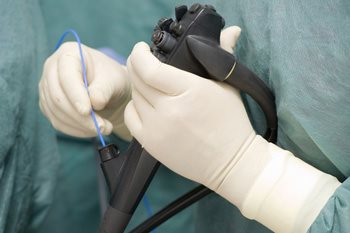Read This for Ultimate Misdiagnosis Information

Introduction
Misdiagnosis is a serious issue that can have negative impacts on patients and their families. When a healthcare provider fails to accurately diagnose a medical condition, it can result in a delay in treatment, inappropriate treatment, or no treatment at all. In this article, we will discuss some crucial information that patients should know to avoid misdiagnosis.
Understanding Misdiagnosis
Misdiagnosis occurs when a healthcare provider fails to accurately diagnose a medical condition. This can include a failure to recognize or interpret symptoms, a misinterpretation of test results, or a failure to consider all possible diagnoses. Misdiagnosis can have serious consequences for patients and can result in unnecessary treatments or procedures, a delay in treatment, or even death.
Commonly Misdiagnosed Conditions
There are some medical conditions that are commonly misdiagnosed by healthcare providers. These can include cancer, heart disease, stroke, and infections. It is important to understand the symptoms of these conditions and to advocate for your own health if you suspect that you may be experiencing symptoms.
Causes of Misdiagnosis
There are many different factors that can contribute to misdiagnosis. These can include incomplete or insufficient medical history, errors in interpretation of diagnostic tests, limited time for patient evaluation, lack of communication between healthcare providers, and a failure to consider all possible diagnoses.
Preventing Misdiagnosis
Preventing misdiagnosis starts with being an informed patient. This means being aware of your own medical history and symptoms, asking questions, and communicating clearly with your healthcare provider. It is important to be persistent when seeking a diagnosis and to seek a second opinion if necessary.
Legal Options for Misdiagnosis
If you believe that you or a loved one have been a victim of misdiagnosis, it is important to consult with an experienced attorney. An attorney can help you understand your legal options and navigate the complex legal system. They can also gather evidence, negotiate with insurance companies, and represent you in court if necessary.
Conclusion
Misdiagnosis is a serious issue that can have negative impacts on patients and their families. By understanding the causes of misdiagnosis, being an informed patient, and seeking legal representation if necessary, you can protect yourself and ensure that you receive the appropriate treatment and care that you deserve. If you believe that you or a loved one have been a victim of misdiagnosis, do not hesitate to seek medical attention and consult with an experienced attorney.
What is a Misdiagnosis?
• A misdiagnosis is an inaccurate diagnosis of a medical ailment. Medical professionals can misdiagnose an individual depending on a number of factors; however, in most instances a misdiagnosis is delivered through a negligent action taken by the medical provider or physician. An erroneous diagnosis can take on a number of forms—sometimes a medical problem is identified when the patient has no such ailments, or a diagnosis can be classified incorrectly. Examples of the latter include a doctor who diagnoses a tumor as benign when it is in fact malignant.
• A misdiagnosis is a medical error, and although it may be difficult to gauge given varying symptoms or the presence of inaccurate statistics, all forms of misdiagnoses will portray some form of externalities or adverse side effect.
Contact a medical-malpractice-lawyer to acquire legal advice and assistance.
Reasons for a Misdiagnosis?
• There are a number of reasons that will cause a misdiagnosis. People often times blame negligent actions or laziness for an inaccurate diagnosis; however, a misdiagnosis can arise for a number of medical reasons. That being said, the presence of a misdiagnosis may award an individual the right to file a medical malpractice suit.
• Reasons that would not necessitate or warrant a medical malpractice suit for a misdiagnosis include: faulty or malfunctioning medical equipment, a patient’s discretion to conceal critical information, a language barrier between the medical professional and the patient, or a situation in which the symptoms of the ailment did not match the universal diagnosis.
• Reasons that would necessitate or warrant a medical malpractice suit for a misdiagnosis: a negligent action taken by a doctor, a failure to adhere to the code of conduct necessary for all doctors to abide by, or a blatant wrongdoing that stems from laziness or the doctor’s inability to deliver a routine medical action.
Consequences of a Misdiagnosis
• The consequences of a misdiagnosis are variable; for example if a patient’s biopsied tumor is misdiagnosed as malignant when it is in fact benign, he or she will undergo unnecessary medical operations. This obviously would adversely affect the individual’s health and would invariably result in a medical malpractice suit.
• In order for the misdiagnosis to be considered malpractice, the individual must suffer a direct loss through a physical damage. Undergoing unnecessary surgery or chemotherapy will inevitably result in a negative effect in the form of unwarranted scars, sickness, and the loss of wages. These instances are grounds for medical malpractice suits; the individual will file a medical malpractice suit to obtain a recoupment for the losses suffered.
• In these instances, the individual must hire a medical malpractice attorney to facilitate their medical malpractice case. The individual must demonstrate to the local court system that the misdiagnosis directly lead to a loss in the form of finances, physical pain, or emotional distress.
























